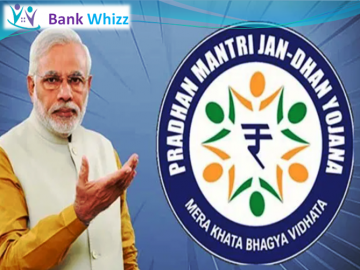
Note: Some Essays seem to be obsolete; however, their patter will help you write newer essays a lot.
Points to be elaborated
- Introduction
- Objectives
- Advantages
- Disadvantages
- conclusion
Introduction
Launched at the hand of the Prime Minister Narendra Modi on August 28, 2014 to bring about economic equality, the Jan Dhan Yojna is a highly ambitious scheme of the government in which each family shall have at least one bank account with even zero balance so that the family may avail itself of the Banking facilities and thus becoming a part of the national mission of Financial Inclusion.
Objectives
- To promote Financial Inclusion by linking people with banks or any other financial institution.
- To provide basic banking accounts with a debit card with inbuilt Accident Insurance of Rs 1,00000/-.
- To protect people from usurers who lend money at exorbitant interest rate.
- To provide two accounts to 7.5 crores identified households by August 2018 with the slogan ‘Sab ka sath Sab ka Vikas’
- To make people economically literate.
Advantages
Any person especially living in remote areas and is deprived of any banking facility will have an easy access to opening up a bank account with zero balance. It will develop in them the saving capacity. It will help them obtain loans from the bank to start their own business or other kind of pursuit to elevate their life standard. It will save them from the clutches of local ‘seth’ and ‘sahukars’ who exploit them monetarily.
The account holder will have a RuPay Card which charges on the holder less as compared to that of VISA card, Master card etc.
The account holder does not require maintaining a certain amount of money in his/her account as it is a zero-balance account. The account is opened easily without exertions.
The account holder will have a life insurance of worth Rs. 30,000/-.
If the account holder maintains the account and saves money, he/she will obtain the over-draft facility of Rs. 5,000/- after six months. After the repayment of the amount over drafted, the limit will increase upto 15,000/-. Almost all banks whether it is public or private have taken part in this national mission of opening up accounts from all over the country. So far, more than 7 crore accounts have been opened by the banks in India and its target is to make an access to each and every person in the country. This ambitious scheme of the government will surely bring about economic equality in the country to a great extent.
Disadvantages
- Most of the accounts that have been opened are zero balance accounts and no transaction is being performed through them. Promoting transactions through such accounts are a major challenge.
- Many accounts under PMJDY are fake accounts. They have been opened with banks so as to take benefit of Overdraft Facility and Life Insurance Coverage.
- The current Rupay Card-ATM transaction model is also not suitable for financial empowerment in a feudal environment of rural areas.
- During the Note-ban, such accounts have been badly used.
Conclusion
Amid few drawbacks recorded so far, the PMJDY has proved to be a big boost to Financial Inclusion. The accounts under the scheme have really helped even the poor to keep out of the clutches of money lenders. To sum up, the Yojana has become successful in removing monetary untouchability to a great extent.


